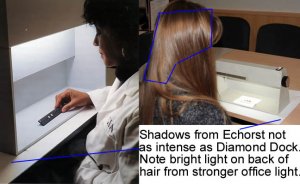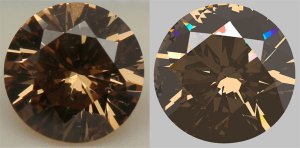- Joined
- Feb 26, 2003
- Messages
- 379
from michael: . ">>> Michael Cowing
Diamondsrock asks: ok, so now as a regular consumer I am completely confused. The most beautiful diamond I have seen (at least in pictures) on Pricescope had crown 34.1 and pav. 41.0. Is this considered a shallow stone and are you saying it will have less brilliance?
P41Cr34.1 is great combination. Sergey Sivovolenko
Sergey is right, P41Cr34.1 is an Ideal combination for the 16 main facets. Any round brilliant that is cut this way is a potential super ideal providing that the symmetry and other 41 facets are also in the range of Ideal.
My above statement is a matter of degree. The ‘sweet spot’ for Ideal is not a point such as Tolkowsky’s P40.75Cr34.5, which was arrived at with a questionable math-physics argument. The sweet spot extends in a non-uniform way centered on Henry Morse’s P41Cr34-35.
Tolkowsky knew this and even says so explicitly and implicitly in his book. IMO the only reason he changed from 41 to 40.75 was to accord with his now questioned derivation.
The fact that Diamondsrock sees P41Cr34.1 as “the most beautiful diamond I have seen” is to be expected if those like myself espousing Morse’s and Tolkowsky’s range of main angle combinations are correct.
Michael Cowing
www.acagemlab.com






300x240.png)